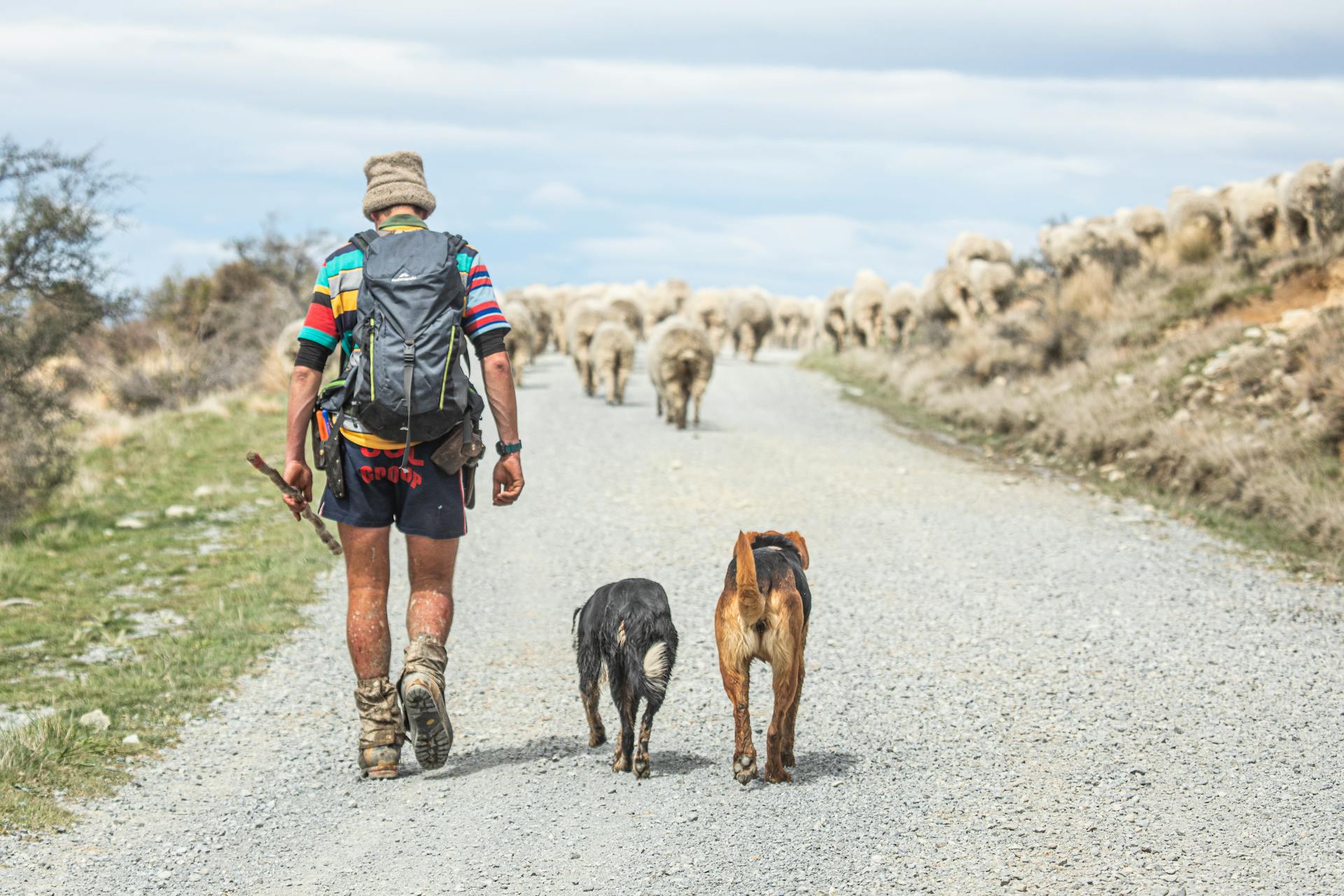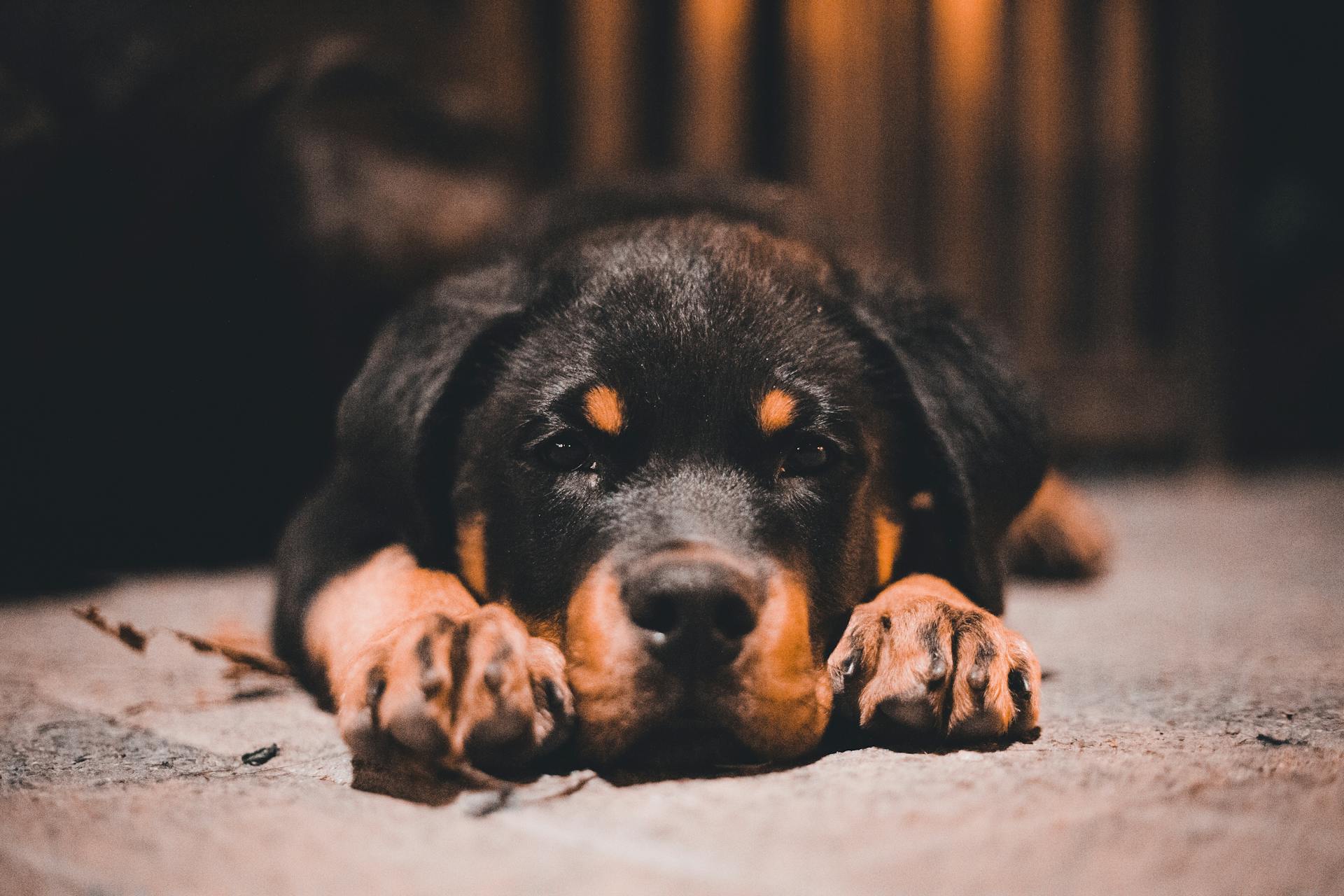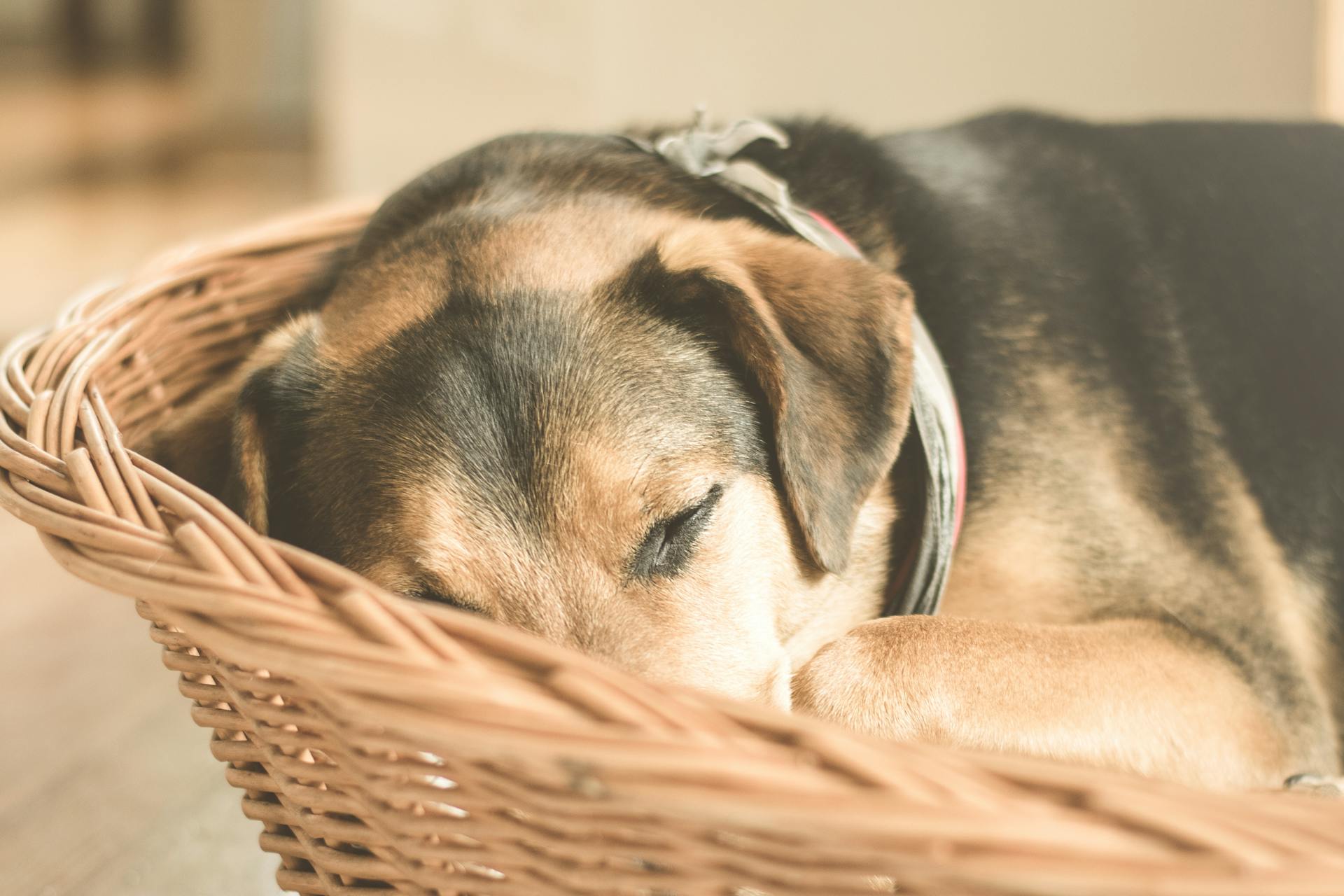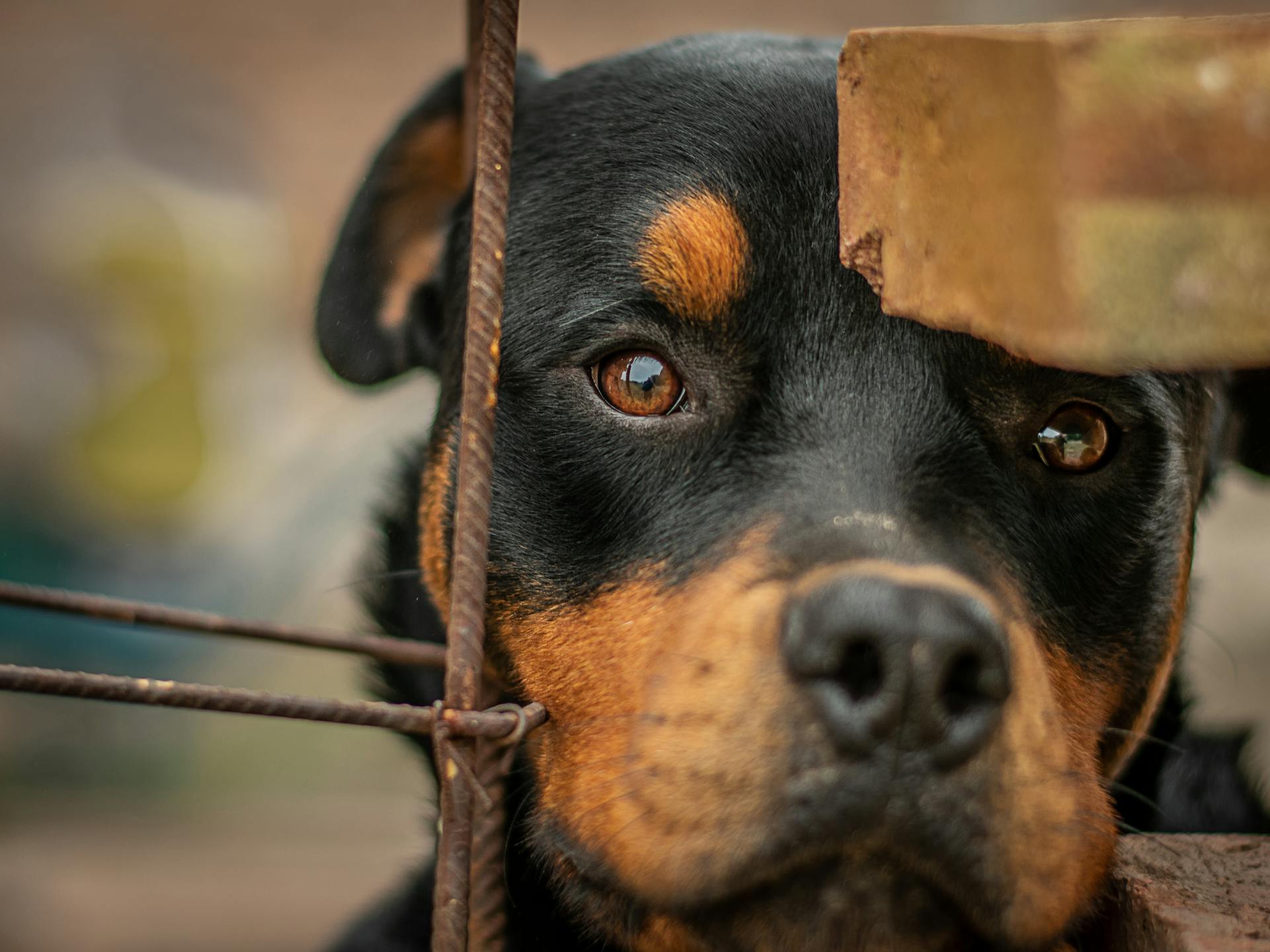
Rottweilers are a popular breed known for their strength and loyalty, but how big do they actually get? On average, males can weigh between 100-135 pounds and stand between 24-27 inches tall at the shoulder.
Their height and weight can vary depending on their lineage and breeding. Some Rottweilers can reach even higher weights, up to 160 pounds in some cases.
A well-nourished Rottweiler puppy can grow up to 2-3 pounds per week during its first year of life, which is a significant amount of growth.
Rottweiler Growth Stages
Your Rottweiler puppy will go through several growth stages that mark milestones for their development and behavior. From birth to 3 months, your puppy will gain a little over two pounds per week, and by this age, they should have gained around 10-11 pounds.
As your puppy continues to grow, their growth rate will begin to slow down, but they will still grow through 18 months and sometimes up to two-to-three years. Every puppy develops at a different rate, so don't worry if your puppy isn't exactly on the same schedule.
If this caught your attention, see: How Big Will My Boston Terrier Get
By 6 months, your Rottie will be around two-thirds of their adult size, but they will still retain their puppy attributes and playfulness. This is a great time to introduce them to new experiences, such as walking outdoors regularly and meeting new people and animals.
At 12 months, most Rotties are considered close to full-grown, but they can still put on weight, with some growing until they are near three years old. Their growth plates will harden and fully close, and their bodies will look mature.
Keep in mind that your Rottweiler can still change their physical appearance and size over the next 2 years, even after reaching full height by 12 months. This is because of their considerable muscle mass, which takes time to develop fully.
Suggestion: Are Rottweilers Good for First Time Owners
Determinants of Adult Size
Genetics play a huge role in determining adult size, with the American Kennel Club classifying Rottweilers as a medium-large breed. Environmental factors have a small impact on a Rottweiler's final weight.
Looking at a Rottweiler's parents can give you an idea of their potential size, but it's not always a guarantee. In fact, even if both parents are 150 pounds, the chances of their puppy reaching 150 pounds are very slim.
Your Rottweiler's growth chart can help you track their progress, but keep in mind that every dog is an individual and may vary from the average. Here's a rough estimate of a Rottweiler's growth stages:
Remember, a Rottweiler's adult size can vary depending on their individual genetics, so it's essential to monitor their growth and adjust their diet accordingly to ensure they reach their full potential.
Nutrition and Feeding
Feeding your Rottweiler puppy a high-quality food specifically made for large breed puppies is crucial for growth. This food should be high in protein and made with real meat as the first ingredient.
Choose a food that slows the growth rate to decrease the risk of joint problems, and be cautious of fat content, which should be around 12-16 percent. Rottweilers are prone to obesity, so it's essential to keep an eye on their fat intake.
Feeding several smaller meals a day is much better than one big meal, especially for puppies under three months old, who should be fed four meals a day. After that, you can switch to two meals a day.
Curious to learn more? Check out: Raw Food Diet for Rottweilers
Will My Get?

Will My Rottweiler Get Big?
Your Rottweiler's adult size is largely determined by its genetics, so ask the breeder about your dog's parents. Their size and weight will greatly influence your dog's adult size.
The American Kennel Club (AKC) calls for the following sizes in Rottweilers: females should be 22-25 inches tall and weigh 80-100 pounds, while males should be 24-27 inches tall and weigh 95-135 pounds.
Males are typically larger than females, with females weighing between 80-100 pounds and males weighing between 95-135 pounds.
You can estimate your puppy's final growth weight using a simple formula: (Current weight/Age in weeks) x 52. For example, if your pup is 25 pounds at 16 weeks of age, the formula would look like this: (25/16) = 1.57 (rounded up), 1.57 x 52 = 82 (rounded up).
The weight at birth is usually not a good indicator of the adult weight. Puppies of one litter can have different sizes, which are largely dependent on factors such as the intrauterine placement and how well their placenta worked.
Here are the estimated sizes for Rottweilers based on the AKC standards:
Don't expect your Rottweiler to reach an unrealistic weight of 150 pounds. If a dog weighs 150 pounds, it's almost certain that it's obese, which can lead to health problems.
Tips on Nutrition
Feed your Rottweiler a high-quality large-breed food to ensure optimal growth. These foods provide the proper nutrition for a big dog like a Rottweiler.
Make sure the food is high in protein, with real meat as the first ingredient, to support those large, strong muscles. A healthy amount of fat content is around 12-16 percent.
Choose treats that are high in protein, not fat, such as freeze-dried liver or tendons. Feed these treats only occasionally to avoid overfeeding.
Feeding too much at once can lead to overfilling your dog's stomach and deep chest area, increasing the risk of bloat. Stick with the recommended amount of food and consider feeding at least two smaller meals a day.
You should be able to easily feel but not see your Rottweiler's ribs, and note a well-proportioned waist when looking at your dog from the top. This will help you determine if your dog is at an ideal weight.
Recommended read: Bullmastiff Crossed with Rottweiler
Puppy Chart
A Rottweiler puppy's growth is a remarkable process, and understanding their development is essential for their care and well-being.
At 8 weeks, a male Rottweiler puppy typically weighs between 10-15 pounds and stands 12-16 inches tall.
By 3 months, a Rottweiler puppy can weigh anywhere from 35-40 pounds and reach a height of 18-19 inches.
The ideal weight range for a Rottweiler puppy at 4 months is 35-40 pounds, with a corresponding height range of 19-20 inches.
Between 6 months and 1 year, a Rottweiler puppy's weight will increase to 55-95 pounds, with a height range of 22-25 inches.
Here's a breakdown of a male Rottweiler puppy's growth chart:
This growth chart provides a general idea of what to expect from a Rottweiler puppy's development.
Health and Safety
As you consider bringing a Rottweiler into your family, it's essential to think about their health and safety. Rottweilers are prone to hip dysplasia, which can lead to arthritis and mobility issues later in life.
Their large size and strength require regular exercise to maintain a healthy weight and prevent joint problems. In fact, Rottweilers need at least 30 minutes of exercise per day to stay happy and healthy.
Consider reading: How Much Exercise Do Rottweilers Need
Ensuring Healthy
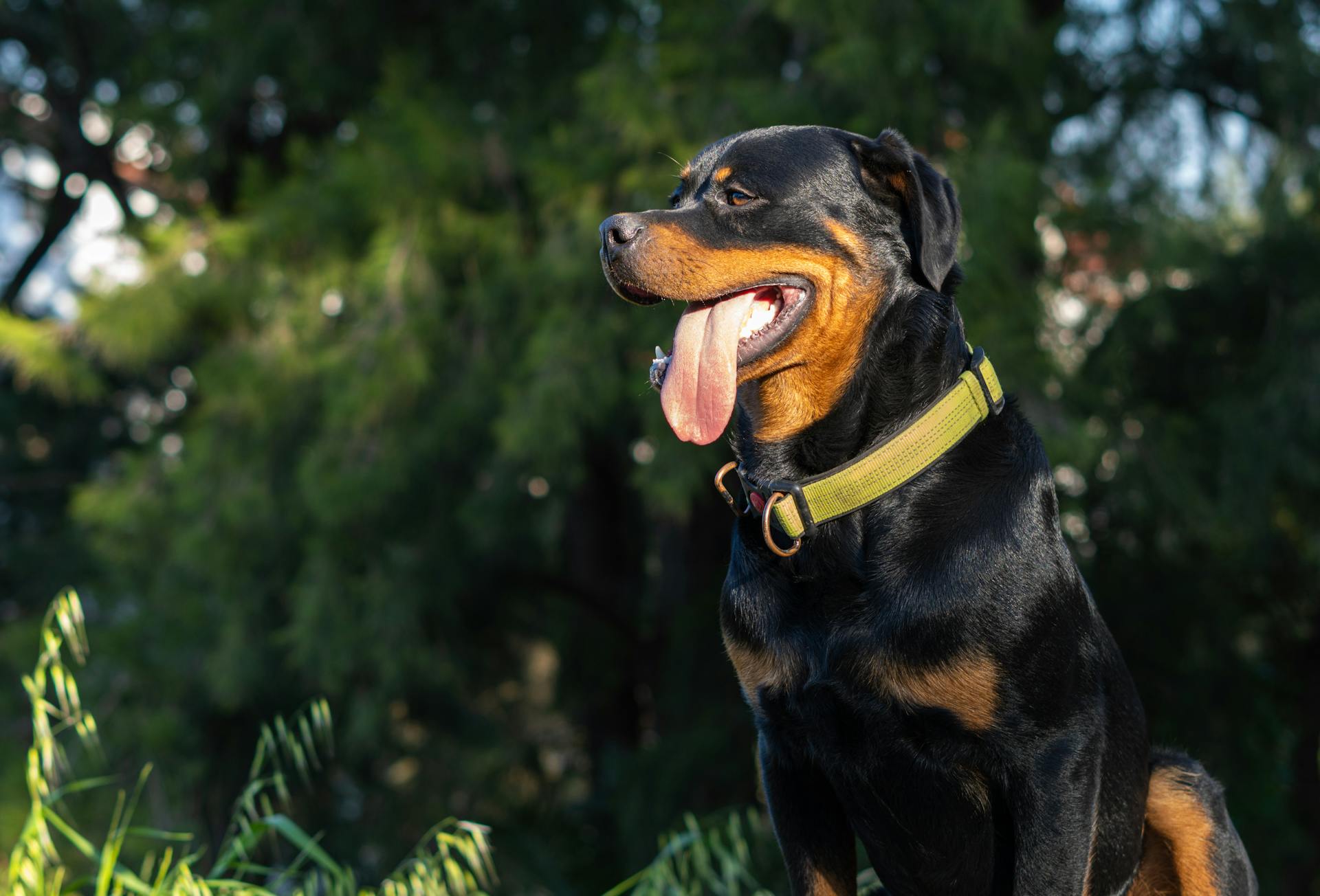
Ensuring healthy growth is crucial for your Rottweiler's overall well-being. There are a number of ways to take care that your Rottweiler grows up to be a healthy dog at a good weight.
Regular exercise is essential to maintain a healthy weight, and Rottweilers need at least 30 minutes of exercise per day. This can be a combination of physical activity and mental stimulation.
A balanced diet is also vital for your Rottweiler's growth and development. Ensuring your dog gets the right nutrients is key to healthy growth.
Feeding your Rottweiler at regular intervals can help prevent overeating and maintain a healthy weight. This can be as simple as dividing your dog's daily ration into 2-3 meals.
Monitoring your Rottweiler's growth is also important to ensure they are developing at a healthy rate. Regular check-ups with your veterinarian can help identify any potential issues early on.
A different take: Bullmastiff vs Rottweiler
Dangers of Stunted
Stunted growth in Rottweilers can have serious consequences on their overall health. Rottweilers are prone to joint-related health issues like dysplasia.
Stunted growth can lead to misalignment of the hips and elbows, causing problems with their gait and stance. This can become arthritic and musculoskeletal pain as they age.
Being underweight can also exacerbate heart conditions in Rottweilers, making them more susceptible to certain health issues.
A fresh viewpoint: Common Health Issues with Rottweilers
General Information
Rottweilers are a working dog breed, which means they're naturally active and need regular exercise to stay healthy. Genetics play a significant role in determining their size and weight, so it's essential to look at the parents' size and weight to get an idea of what to expect.
A Rottweiler's weight and height are primarily determined by genetics. If you feed your dog an appropriate amount of good quality food, they have a better chance of growing to a healthy weight without becoming too fat or too thin. If your Rottie isn't a working dog, it will be up to you to ensure they get the proper amount of exercise.
Diet and exercise are crucial in helping your Rottweiler reach a healthy weight with plenty of lean muscle and less body fat. Feed your puppy an appropriate large breed food in the recommended amounts to avoid speeding up or slowing down their growth.
A Rottweiler that leads a sedentary life may be prone to becoming overweight, so make sure to provide them with regular exercise to keep them active and healthy.
Curious to learn more? Check out: Why Is My Dog's Chest so Big?
Frequently Asked Questions
Can a Rottweiler weigh 150 pounds?
A Rottweiler weighing 150 pounds is rare and may indicate obesity. Typically, Rottweilers weigh between 85-135 pounds, with males reaching the upper end of this range.
Sources
- https://www.greencrossvets.com.au/pet-library/dogs/breed-guides/rottweiler-owners-guide/
- https://petnewsdaily.com/rottweiler-growth-chart-how-big-will-your-rottweiler-get/
- https://spiritdogtraining.com/growth-chart-calculator/rottweiler/
- https://www.hepper.com/rottweiler-weight-chart/
- https://mississippirottweilers.com/how-big-do-rottweilers-get/
Featured Images: pexels.com
